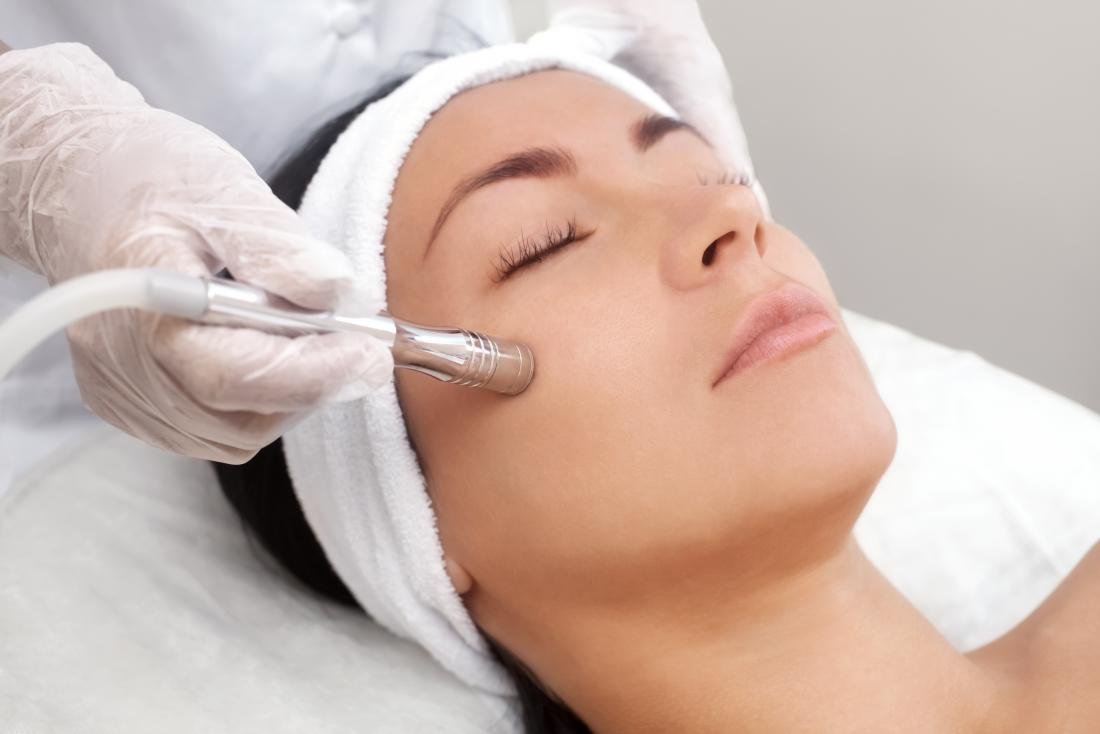Athena Skin Hair & Dental Clinic
Microdermabrasion

What is Microdermabrasion
Microdermabrasion is a non-invasive cosmetic procedure that exfoliates and removes the superficial layer of dry, dead skin cells.
Microdermabrasion is a safe and effective solution for rejuvenating the skin and addressing various concerns, from fine lines to acne scars. With little to no downtime, it is an excellent option for those seeking a non-invasive skin enhancement. To achieve long-lasting results, following a proper skincare routine and scheduling regular treatments is recommended. Consult a professional dermatologist or skincare specialist to determine if microdermabrasion is right for your skin type.
Symptoms and Skin Concerns Treated by Microdermabrasion
Microdermabrasion is effective in addressing various skin concerns, including:
Fine Lines and Wrinkles: Reduces the appearance of aging signs by promoting collagen production.
Acne and Acne Scars: Helps in reducing acne and light acne scarring.
Uneven Skin Tone: Treats hyperpigmentation and sunspots.
Dull Skin: Revitalizes the skin by improving blood circulation.
Enlarged Pores: Minimizes the appearance of large pores.
Stretch Marks: Reduces the visibility of stretch marks over time.
Blackheads and Whiteheads: Clears out clogged pores for a smoother skin texture.
Procedure: How Microdermabrasion Works
Microdermabrasion is a quick and painless procedure, typically completed within 30 to 60 minutes. It involves the following steps:
Cleansing: The skin is thoroughly cleansed to remove makeup, oil, and dirt.
Exfoliation: A handheld device is used to exfoliate the skin, either with fine crystals or a diamond-tipped wand.
Suction: Simultaneously, a vacuum mechanism removes dead skin cells and debris.
Hydration: A soothing moisturizer or serum is applied to nourish the skin.
Sun Protection: Sunscreen is applied to protect the freshly treated skin from UV damage.
Depending on individual skin needs, multiple sessions (4 to 10 treatments) may be recommended for optimal results.
Causes of Skin Issues Treated by Microdermabrasion
Various factors contribute to skin problems that can be treated with microdermabrasion:
Aging: Natural collagen breakdown leads to wrinkles and sagging skin.
Sun Exposure: UV rays cause pigmentation, sunspots, and premature aging.
Acne and Blemishes: Clogged pores and excess oil production result in breakouts.
Environmental Damage: Pollution and toxins contribute to dull and uneven skin texture.
Hormonal Changes: Can trigger acne, melasma, and uneven skin tone.
Prevention: How to Maintain Healthy Skin
While microdermabrasion offers significant improvements, maintaining healthy skin requires consistent care. Here are some tips to prevent skin issues:
Daily Skincare Routine: Cleanse, exfoliate, moisturize, and apply sunscreen.
Hydration: Drink plenty of water to keep skin supple and hydrated.
Healthy Diet: Consume foods rich in antioxidants, vitamins, and minerals.
Sun Protection: Use SPF 30+ sunscreen daily to prevent sun damage.
Avoid Harsh Chemicals: Opt for gentle, non-comedogenic skincare products.
Regular Skin Treatments: Schedule periodic facials or microdermabrasion sessions as needed.
Recovery and Aftercare
Microdermabrasion has minimal downtime, making it a convenient procedure. However, post-treatment care is essential for the best results.
What to Expect After Treatment:
Mild redness and slight sensitivity for a few hours.
Temporary dryness or peeling as the skin regenerates.
Brighter and smoother skin within a few days.
Post-Treatment Care:
Avoid direct sun exposure and use sunscreen diligently.
Moisturize the skin to keep it hydrated.
Avoid using harsh skincare products for at least 24-48 hours.
Refrain from picking or scratching the treated area.
Stay hydrated to aid in skin healing.
Most individuals see noticeable improvements after the first session, but multiple treatments yield the best results.
